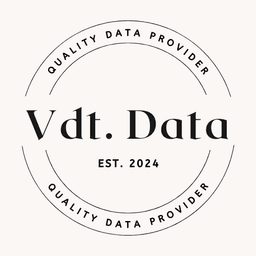Global Music Insights Dataset
Entertainment & Media Consumption
Tags and Keywords
Trusted By




"No reviews yet"
Free
About
This dataset contains fictional data for more than 12,000 songs across various genres, languages, and periods. It provides rich metadata such as song popularity, streaming statistics, and production credits. The dataset is designed for educational and creative purposes, offering insights into trends in music, listener preferences, and factors influencing song popularity.
Dataset Features
- song_id: A unique identifier for each song.
- song_title: The title of the song.
- artist: The name of the artist performing the song.
- album: The album where the song is featured.
- genre: The music genre (e.g., pop, electronic).
- release_date: The release date of the song (in DD/MM/YYYY format).
- Duration: The duration of the song in seconds.
- popularity: A score (1–100) representing the song's popularity.
- stream: The total number of streams the song has received.
- language: The primary language of the song.
- explicit_content: Indicates whether the song contains explicit content (yes/no).
- label: The record label that published the song.
- composer: The composer who wrote the song.
- producer: The producer responsible for the song's production.
- collaboration: This column shows about collaboration.
Distribution
- Data Volume: 12,794 rows and 15 columns.
- Format: Tabular dataset suitable for analysis in CSV, Excel, or database formats.
Usage
This dataset is ideal for a variety of applications:
- Music Trend Analysis: Explore genre trends, popularity metrics, and streaming behaviour.
- Recommendation Systems: Train machine learning models to suggest songs based on user preferences.
- Market Research: Analyze factors driving song popularity across genres and languages.
- Creative Projects: Use the data for storytelling, visualization, or mock product development.
Coverage
- Geographic Coverage: Global, representing songs in multiple languages and regions.
- Time Range: Includes songs from various time periods up to recent releases.
- Demographics: Covers multiple music genres, languages, and explicit content preferences.
License
CC BY-SA 4.0
Who Can Use It
- Data Scientists: To create models analyzing music trends or predicting popularity.
- Researchers: For academic studies on music and its cultural impact.
- Businesses: To analyze music market trends and consumer behavior.
- Content Creators: For storytelling, educational purposes, or prototyping music-related applications.
Loading...
